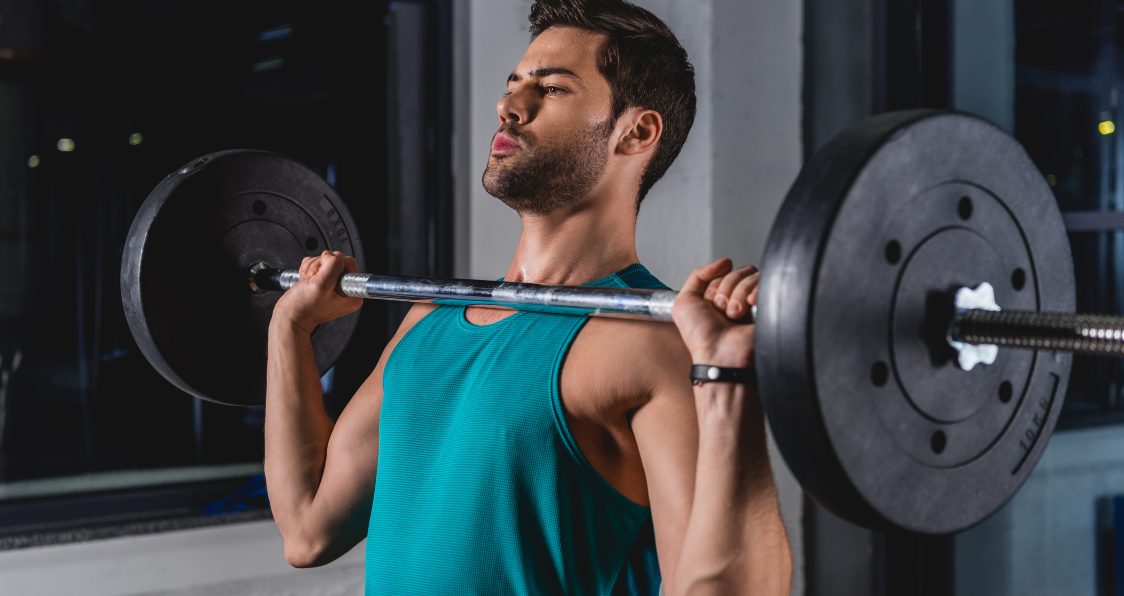
The Best Types Of Barbells & What They’re Good For
Barbells can be helpful tools when it comes to building muscle and knowing which type to use and for what can greatly benefit our gains.
For many of you bodybuilders and athletes familiar with the gym and the many components to it, barbells and specialty barbells may be no secret. You know exactly what they are and how to use them to maximize gains and maybe you do perform exercises with them. But those general fitness folks, or even yes, some bodybuilders and athletes, may not know the difference between these bars and that’s a problem. Not knowing means you aren’t maximizing your gains as much as possible and we all know you don’t want that.
By trying new equipment and stepping out of your comfort zone, you can give variety to your workouts which is great for things like muscle confusion and breaking through any of those dreaded training plateaus. The great part about these barbells and other specialty barbells is that they each work your muscles differently so you can attack those gains from every angle, forcing your muscles to grow. It is what we want after all.
Let’s take a look at barbells and the specialty barbells that make the gym such a unique place. With options to diversify your workout, it would be a disservice to not include these in your workouts. Check out some the best barbells on the market to get inspired by some great products as well!
Benefits Of Barbells
The benefits of barbells and barbell training on our growth and gains will aid in functional movements, as well as those more sport specific ones to enhance athletic performance.
Benefits of barbells and barbell training include:
Better growth and performance: Work to build functional and sport specific strength and size to see that desired growth and performance increase (1,2).
Versatile and convenient: Barbells can work for endurance and strength training purposes and do not take up a whole lot of space.
Great workout additions: Barbells allow you to perform things like drop sets and increased time under tension to see more growth and a shredded physique.
Types Of Barbells & What They’re Good For
Let’s take a look at the different types of barbells and what they’re used for.
Traditional Barbell
The traditional barbell is your most common type of barbell being a long pole, made mostly of steel, that is fairly smooth except for the portion of the grip. These are great for a wide range of exercises like your big three powerlifting ones and others like the overhead press.
Hex Bar
The hex bar looks a bit like a trapezoid and the point is to stand in the middle as you grip the handles. Great for leg exercises, it moves you directly in the middle of the weight, as opposed to behind or in front with the traditional barbell. Your grip is also kept neutral (3).
Swiss Bar
The Swiss bar is a multi-grip bar designed to place your hands in a neutral position. This bar allows for more stability and less chance of injury in the shoulders, which are pivotal for a number of movements. Great for growth and a variety of exercises, the Swiss bar is perfect for all your gains.
EZ Curl Bar
The EZ curl bar is a great bar for arm exercises and is typically lighter and more curved, given the different grips. It is easier on your wrists and can work wonders as you look to build those bulging biceps (4).
Buffalo Bar
The Buffalo bar is curved and is designed to take stress off of the shoulders. The positioning and the thickness distributes the resistance across more surface so it isn’t concentrated on one point. It is used for squatting and is really the only barbell that allows the same form as a traditional one.
Yoke Bar
A specialty squat bar, the yoke bar can work to strengthen your back and lower body. With this bar, you need to stay tight but can push it a bit more as opposed to something like the cambered bar.
Cambered Bar
Definitely for more experienced lifters, the cambered bar is a strange looking bar that is highly effective at relieving stress off your shoulders. The downside to this bar is that it is unstable so a more experienced lifter who stays more tight and more controlled would benefit greatly (5).
Featured Barbell For Gains
Those who look for the best barbells may be wondering how it’s possible to find one. They are all the same, aren’t they? No. A great barbell will be versatile and made with the utmost precision to ensure longevity and performance. This barbell from American Barbell is built to last and offers the best chance at gains.
American Barbell 20KG Training Bar
American Barbell 20KG Training Bar is a versatile barbell that is rigorously tested for training and competition. A precision ground alloy steel shaft ensures quality, durability, and longevity.
American Barbell 20KG Training Bar is a versatile bar tested and approved for training and competition. The precision ground alloy steel bar shaft is tested through a rigorous process to ensure longevity and excellent whip for optimal performance. A finished hard chrome adds extra durability and corrosion resistance for nice added features. The bar sleeves work to rotate smoothly and this bar is 20kg, 28mm in diameter, and 2,200mm in length. American Barbell Training Bar is built to last while providing comfort and longevity for all of your goals.
Price: $325.00
Check out our individual review for American Barbell 20KG Training Bar here!
Check out our list of the Best Barbells for more great lifting bars!
Wrap Up
When it comes to using barbells and specialty barbells, knowing which ones to use can greatly influence our gains. With so many out there, it can be challenging to know for sure but with knowledge of what to use and how to use it, you can break through any of those dreaded training plateaus and add a nice variety to your workout. Give these barbells a try and see what they can do for you today.
Let us know what you think in the comments below. Also, be sure to follow Generation Iron on Facebook, Twitter, and Instagram.
*Images courtesy of Envato
References
Thompson, Brennan J.; Stock, Matt S.; Shields, JoCarol E.; Luera, Michael J.; et al. (2015). “Barbell Deadlift Training Increases the Rate of Torque Development and Vertical Jump Performance in Novices”. (source)
Mangine, Gerald T.; Hoffman, Jay R.; Gonzalez, Adam M.; Townsend, Jeremy R.; et al. (2015). “The effect of training volume and intensity on improvements in muscular strength and size in resistance-trained men”. (source)
Lockie, Robert G.; Lazar, Adrina (2017). “Exercise Technique: Applying the Hexagonal Bar to Strength and Power Training”. (source)
Fry, Andrew (1986). “The E-Z curl bar”. (source)
Corey, Stephen W. (1991). “The cambered bar”. (source)
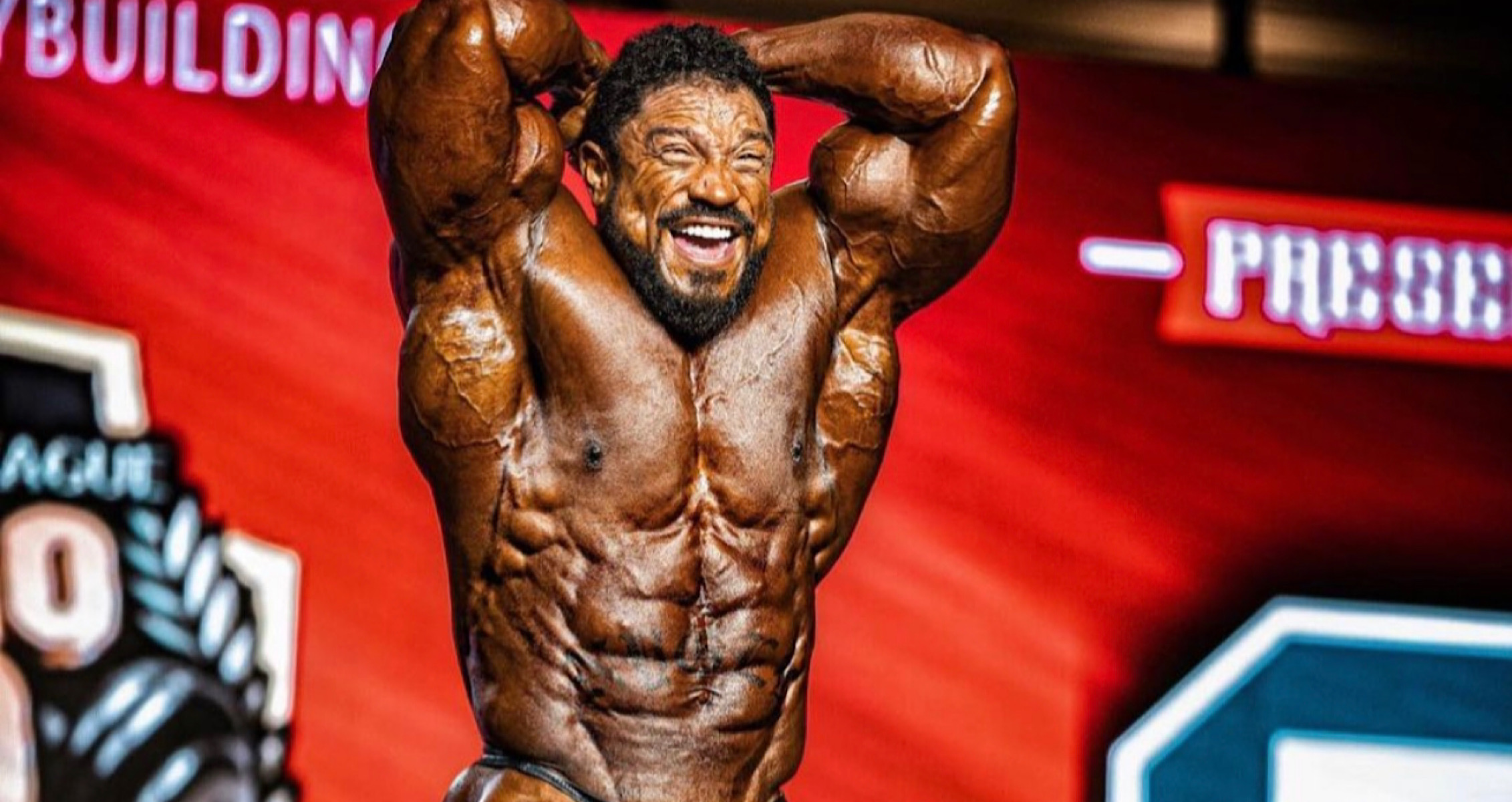
After Taking Fifth at the Chicago Pro, Roelly Winklaar Vows to Compete at Tampa Pro
Roelly Winklaar vows to return to competition in two weeks.
What a wild turn of events. Roelly Winklaar took fifth place at the Chicago Pro. The veteran bodybuilder was unable to qualify for the 2021 Olympia. Instead it was Hunter Labrada who was able to take the top spot at the Chicago Pro and punch his ticket to the big show.
To say that it was a shock to see Roelly Winklaar not only miss his opportunity to win the Chicago Pro, but end up in fifth is an understatement. It was truly one of the bigger upsets in recent memory.
With the placing it certainly seems as if a changing of the guard is occurring in bodybuilding. Think about; no longer do we see names like Victor Martinez, Kai Greene, Dexter Jackson (for obvious reasons) and now Roelly Winklaar win shows. It’s now names like Hunter Labrada and Nick Walker who are taking top honors.
Next Stop: Tampa Pro
With that said one show alone isn’t enough to declare Roelly Winklaar finished. The veteran bodybuilder took to social media to inform fans of his next move.
First of all, I would like to send a huge thank you to the @ifbb_pro_league, @wingsofstrength, and @timgardnerproduction for putting on such an amazing and incredible show!
I would also like to congratulate @hunterlabrada on his WIN… It was a fun and great battle amongst us bro!
Even though I came up short this time, the fight doesn’t stop here… Tampa Pro here I come!!!??
It looks like Roelly Winklaar has his sights set on Tampa Pro.
While it’s great to see Roelly Winklaar continue to fight the good fight, he’ll have a tough line up to contend with at the Tampa Pro. Namely, Roelly will have to face off against opposition like Iain Valliere who is absolutely no slouch. Perhaps Roelly can turn things around and show the bodybuilding world that his recent loss was a fluke rather than a trend.
For more news and updates, follow Generation Iron on Facebook, Twitter, and Instagram.
Managing Editor at Generation Iron, Jonathan Salmon is a writer, martial arts instructor, and geek culture enthusiast. Check out his YouTube, Instagram, Twitter, Facebook, and Sound Cloud for in-depth MMA analysis.
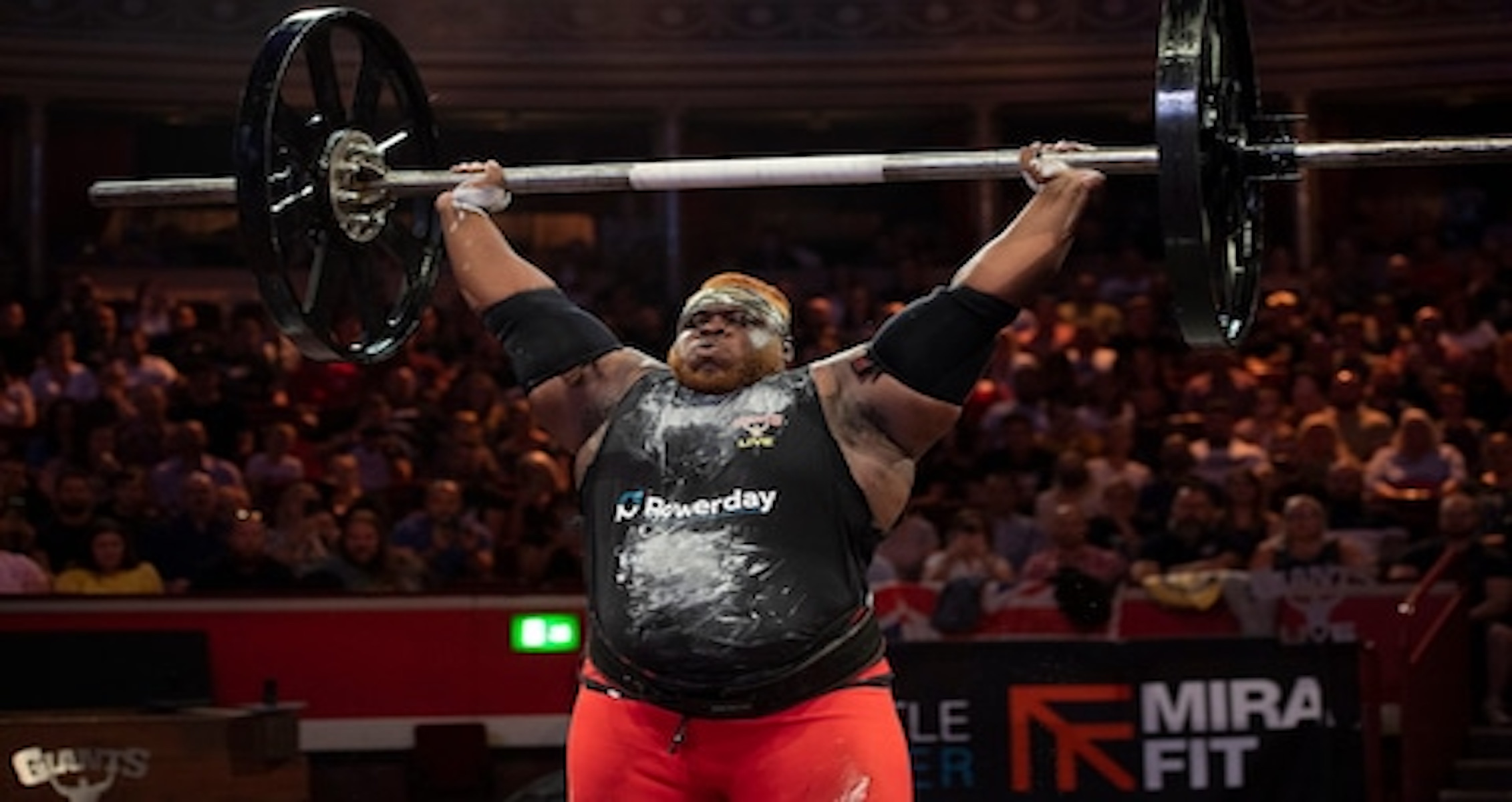
Iron Biby Sets New Axle Press World Record With 217kg Lift
Cheick Al-Hassan Sanou, known as “Iron Biby”, set a new world record at the 2021 Strongman Classic.
Cheick Al-Hassan Sanou has made a name for himself in the strongman community as “Iron Biby.” On Saturday, Sanou lived up to that nickname by setting a new world record in the Axle Press. Sanou stepped up to the platform and accomplished a 217kg (478.4lb) lift during the 2021 Strongman Classic at Royal Albert Hall in London.
Sanou completed the lift with an overhand/underhand grip and locked out his arms at the top. The judge gave the down command and by the time the weight hit the floor, Iron Biby broke a record that has been in place for four years.
Eddie Hall previously held the record of 216kg that was set during the 2017 Europe’s Strongman contest. Hall topped the 215kg lift accomplished by Zydrunas Savickas in 2011. This marked the second straight instance where this world record has been broken by one kilogram.
Hall took to Instagram to congratulate Sanou and by his words, it is no surprise that Iron Biby was able to break the record.
“Well done to @ironbiby for breaking my world record axle press last night at 217kg ?Iv seen him do 230kg in training at his home gym, but this is where it counts ? ?#Competition #Strongman #Beast#WorldRecord #GiantsLiveBig LoveTeam Beast”
Sanou has completed an unofficial overhead lift of 240kg (529lb) so it is no surprise that he was able to set the new world record. Iron Biby has been making some noise in the powerlifting game for years now. He claimed first place at the World Log Lift Championship 2018 and log lift at the Europe Strongest Man 2019.
Over the weekend, Sanou took home the third place prize overall. Oleksii Novikov, who won the 2020 World’s Strongest Man competition, finished first overall while Evan Singleton was second.
It was a special moment for Sanou and one that he will never forget. This is something he took the time to cherish on social media.
Sanou began his long post by describing the moment and taking time to acknowledge Hall.
“WHAT A SPECIAL NIGHT ✨Was an honor to compete at ROYAL ALBERT HALL . It’s is an iconic arena and the right place for me to Break axle the world record owned by the beast @eddiehallwsm . He is a great man and he inspired to do it . God bless him??Will never forget this day .”
Sanou could have his eye on some more records moving forward. For now, the Axle Press record is his and it will be a tough one to top.
For more news and updates, follow Generation Iron on Facebook, Twitter, and Instagram.
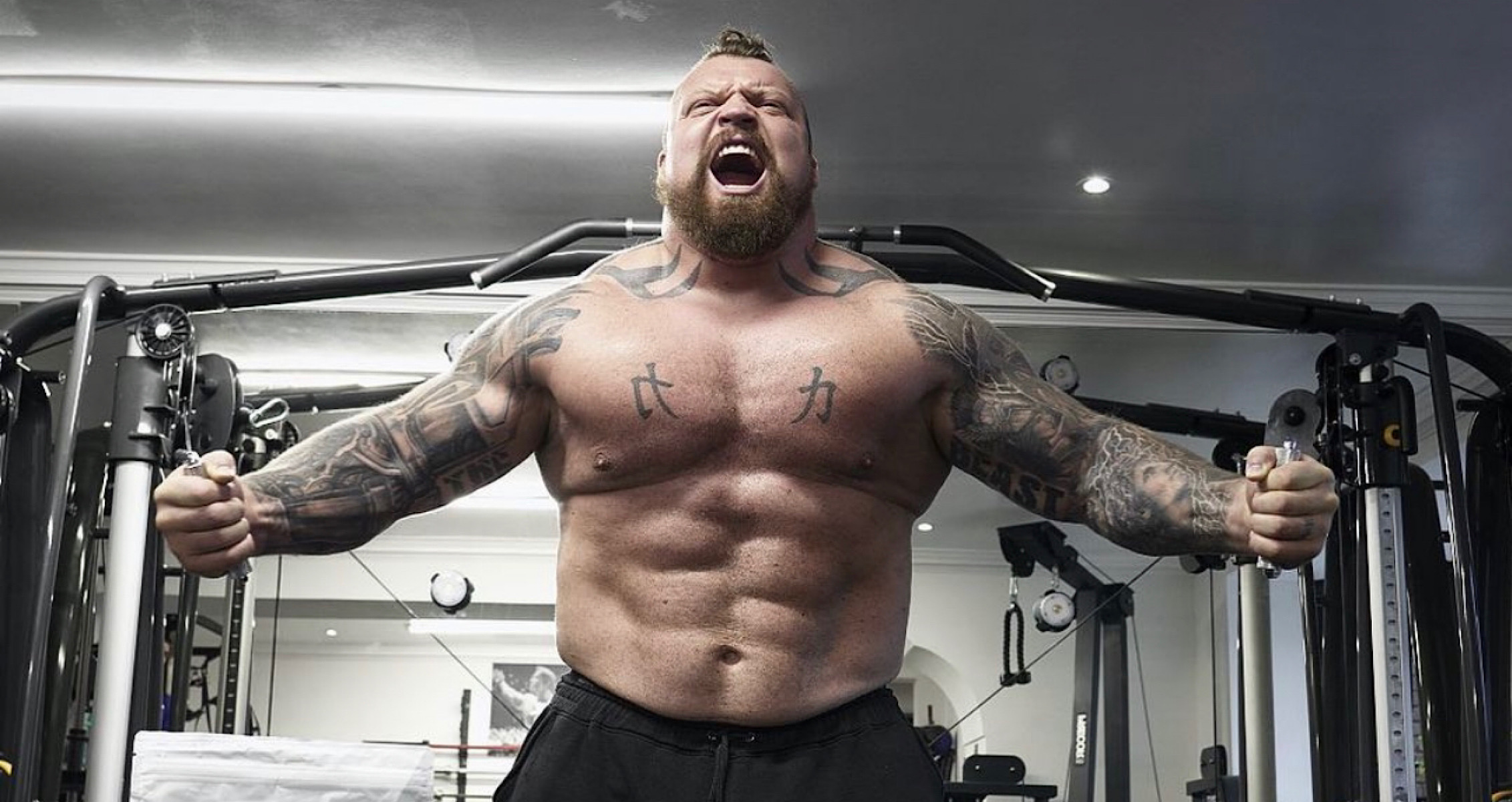
Eddie Hall Tears Bicep, Fight With Hafthor Bjornsson Postponed
Eddie Hall injures his bicep and the Hafthor Bjornsson bout has been postponed.
Well that’s disappointing. Eddie Hall has apparently tore his bicep and is out of his fight with Hafthor Bjornsson. That is definitely not the news anyone wanted to hear. Unfortunately the news is all too true.
It appears that Eddie Hall injured his bicep during his training for his bout with Hafthor Bjornsson. Apparently Eddie Hall threw a lead hook during his training and the muscle tore off the bone. Luckily the strongman was able to get the muscle reattached. The not so sunny news is that the bout with Bjornsson will have to wait.
This is a real bummer, especially since the fight was right around the corner. Both Eddie Hall and Hafthor Bjornsson seemed more than ready to get the show on the road. Unfortunately no one can predict an injury and the injury bug decided to rear it’s ugly, disruptive head just a month out from the big fight.
Eddie Hall went on to explain how the injury occurred. Suffice it to say the strongman was none too happy about the occurrence.
“I’ve had it [the biceps] reattached, which is the good news,” Hall said in a recent video. “All I did was throw a lazy hook — nothing too crazy, just a lazy hook to set up a backhand — and it just snapped off. It’s probably an underlying issue from strongman, probably half detached it and then the hook was enough to take the rest of it off and it rolled up my arm.”
You can see the full video of Eddie Hall here.
To be honest, Eddie Hall may have used some bad technique which is the real culprit. Bad technique can get you severely injured in this game. It’s why many brawlers have a short career in boxing an MMA versus the technically sound competitors.
Moving On
It appears that Hafthor Bjornsson isn’t planning on waiting for his foe to heal up. Instead Bjornsson has chosen to find another opponent for the September date. Bjornsson has already had a number of exhibition bouts over the past year, what’s another?
The only issue is all those tickets sold for a bout that won’t happen. It’s certainly a bitter pill to swallow. Likely refunds will be issued, but the whole situation is just unfortunate. The bout will eventually go down but until that day we’ll simply have to wait for Eddie Hall to heal and Hafthor Bjornsson to take another exhibition bout.
What do think of the Eddie Hall versus Hafthor Bjornsson fight being postponed?
For more news and updates, follow Generation Iron on Facebook, Twitter, and Instagram.
Managing Editor at Generation Iron, Jonathan Salmon is a writer, martial arts instructor, and geek culture enthusiast. Check out his YouTube, Instagram, Twitter, Facebook, and Sound Cloud for in-depth MMA analysis.
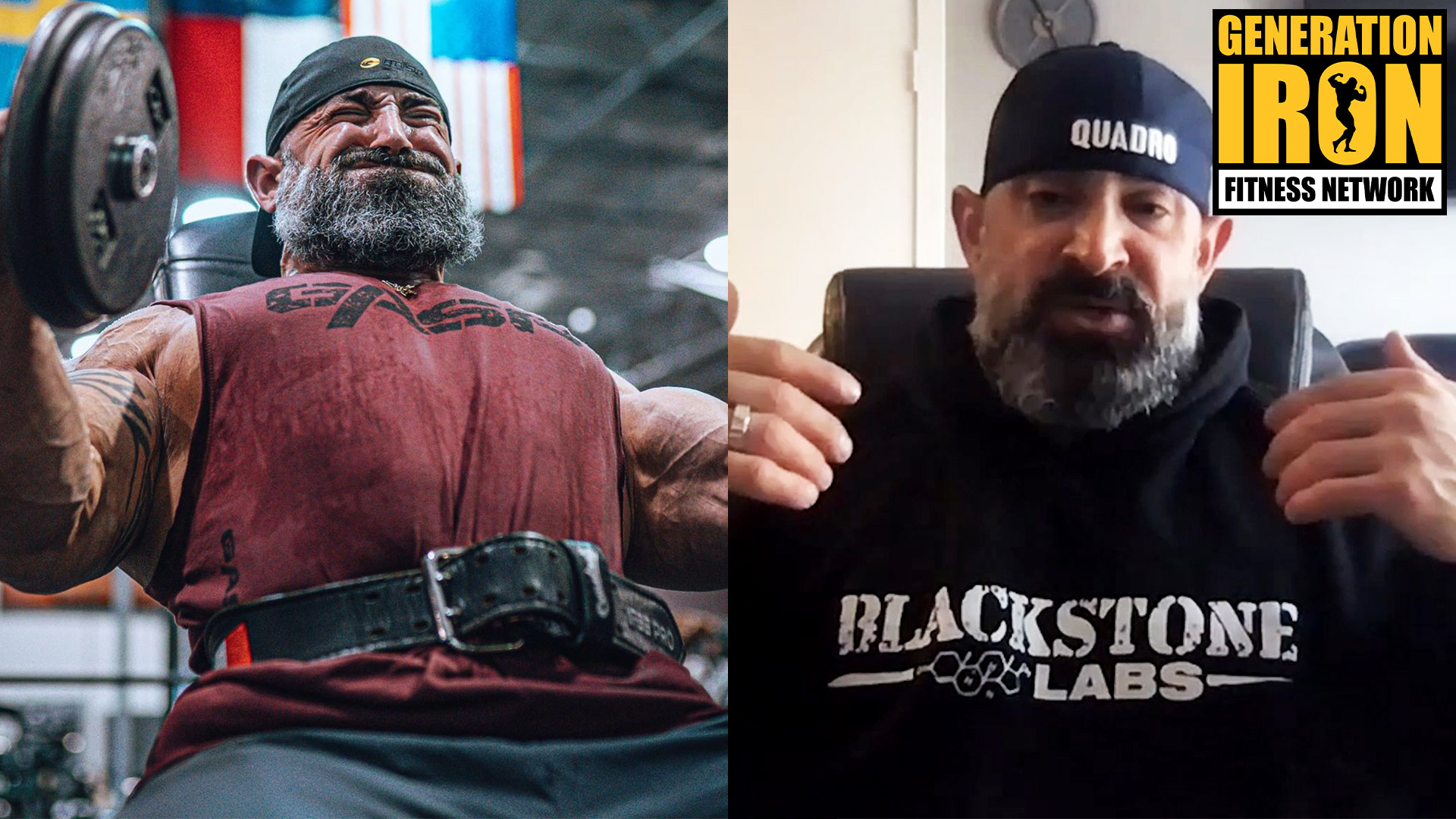
Guy Cisternino: Why You Shouldn’t Worry About Heavy Weight vs Light Weight Training
[embedded content]
Guy Cisternino shares some wisdom as to why people should stop worrying about free weights vs machines or heavy weight vs light weight.
A common question that comes up when people are looking for bodybuilding advice is what generation training style they should focus on. Is it better to do more free weights or more machine exercises? Is it best to do heavy weight and low volume or light weight and high volume? Guy Cisternino is someone who has been notoriously known for his hardcore heavyweight training. But surprisingly, he gives a different kind of advice when it comes to these general questions. In our latest GI Exclusive interview, Guy Cisternino explains why you shouldn’t worry about free weights vs machine or heavy weight vs light weight training.
In one of our previous interviews, Guy Cisternino talked about how Branch Warren was his biggest inspiration. The reason for this was due to his hardcore passionate training style. It’s how Cisternino himself loves to train. He worries that not enough young people still have that hardcore passion in the gym anymore.
But that hardcore style of training has less to do with what is successful for bodybuilding and more to do with the culture. While Guy Cisternino loves to train hardcore – he also understands it is not necessary to be a massive shredded bodybuilder. Rather than it being a necessity for success – he simply sees it as a cultural passion that excites him. He likes that attitude and that atmosphere.
That’s why when we ask him whether or not heavy weight vs light weight matters. Or whether or not free weight vs machines matter – his answer is more open minded. Guy Cisternino has been through some injuries and is now a slightly older (but not old) bodybuilder. He hooked up with John Meadows as his trainer more recently – and Meadows changed up the kind of training he does in light of his age and injuries. What Cisternino learned through this process changed his perception on what is important in bodybuilding training.
To Guy Cisternino, it matters less whether or not you do machines vs free weights or heavy weight vs light weight. Instead, it matters more how you break up your body parts and how much focus you put into each workout. Yes, there are little differences – pros and cons to each approach – but ultimately they are not game changers. Whether you lift heavy weight or hight weight or free weight or machines – you can be a successful and massive bodybuilder with any of these approaches. What matters more is how you do these tactics and the way you break up each body part throughout your week of training.
What he means by this is that by changing up how you break up the body parts you work in a given workout – you can be saving your joints from too much pressure in one session. This can save you injury, wear, and tear in the long run. So someone like Guy Cisternino can train hardcore to his liking with less risk (though still there is always risk) of injury. This provides longevity. So you can be like Dexter Jackson or you can be like Branch Warren.
Both of these bodybuilders are legendary in their own right and they both used vastly different techniques – but if you break up the body parts right, you can extend your longevity as an athlete.
You can watch Guy Cisternino go into full detail in our latest GI Exclusive interview segment above!

Bodybuilder And Actor Mike Mitchell Has Died Of A Heart Attack
Mike Mitchell, known as a bodybuilder and for his part in ‘Braveheart’, passed away of a heart attack in Turkey.
Mike Mitchell, a bodybuilding champion turned actor, has passed away at the age of 65 of a heart attack. Mitchell died on a boat in Turkey of what was believed to be natural causes. Later, a rep of Mitchell’s told TMZ that a heart attack was the cause.
In a statement, the rep described Mitchell as a “true friend” and “honest person.”
“It was very hard to believe … The sudden death of an international actor we managed, an honest person, a real actor, a true friend, my dear friend, has saddened us deeply. I’ve always been honored to be your manager. I wish patience to you wife, dear Denise Mitchell, and your children. Getting to know you and gaining your friendship is invaluable. Sleep in the lights. RIP.”
Mike Mitchell made a name for himself as a bodybuilder. The Scottish star got started in fitness at an early age and showed off his tremendous size on the biggest stages. Mitchell totaled five Masters Mr. World titles and two Mr. Universe titles with the World Fitness Federation. He also competed in many strongman competitions including Britain’s Strongest Man contest.
During his prime in bodybuilding, Mike Mitchell gained attention due to his incredible size and this landed him some on-screen movie roles. Mitchell is known for his parts in Braveheart and Gladiator. Mitchell has worked with the likes of Mel Gibson, Russell Crowe, and Joaquin Phoenix. He also appeared in One Day Removals, City of Hell, and Skyfall, among others.
Mitchell suffered a setback when he had a heart attack that forced him to take a break after winning his fifth World Fitness Federation title in 2006. In 2010, Mitchell was inducted into the WFF Hall of Fame and given the “Living Legend Award,” which is an extremely prestigious honor.
Mike Mitchell’s love of sailing and the sea began at a young age. At 16 years old, he served in the British Armed Forces and eventually became a part of the Elite special Forces unit. When he left to work in the offshore oil industry, Mitchell started deep-sea diving. He was a fan of sailing and continued to do so in between his bodybuilding and acting careers.
Mike Mitchell is survived by his wife, Denis, and children. He was immensely talented in many areas and grew to be a legend in the sport of bodybuilding.
Generation Iron send out condolences to the friends and family of Mike Mitchell during this difficult time. For more news and updates, follow Generation Iron on Facebook, Twitter, and Instagram.

Post-Workout Anabolic Window: Fact Or Fiction?
A highly debated topic, the anabolic window is something to really consider.
We all know that consuming some sort of protein after our workout is valuable in seeing those gains we seek most and the anabolic window may be the key to unlocking said gains. Protein, protein, protein. That seems to be all we hear about, but the truth is, it is so important. Protein is the building block for all muscle and for those of us bodybuilders and strength athletes that seek to put on as much muscle as possible, it would be a huge disservice to neglect the importance of protein. Whether that be a high protein meal, or a seriously effective protein powder, the gains we seek most lie with the common denominator of the more protein, the better.
The anabolic window is a highly debated topic, and some may say controversial. With so many voices giving their opinions on said topic, it can hard to decipher who is telling facts and who is simply spewing fiction. The facts tell us that muscle growth goes beyond the actual workout and that post-workout nutrition and a recovery routine are beyond vital for seeing the gains we want most. But knowing when to consume protein before our “window” for gains closes is very important to understand.
Let’s take a look at the anabolic window. We’ll talk about what it is and if the idea around this controversial topic is fact or fiction. You deserve to know how best to maximize your gains and we seek to give you the best answer.
What Is The Anabolic Window?
The anabolic window is essentially the amount of time you have post-workout to maximize anabolic activity through protein supplementation. It is commonly said that this window lies somewhere in the ballpark of 30-60 minutes after your workout. Anything after and you start to see a decline to your muscle building and strength training goals. But some research has now come out saying this time frame may be extended past this traditionally accepted window. While that may be the case, there still may be downsides to consuming that valuable protein intake well past the one-hour mark (1).
The anabolic window is based off of anabolism, which is when smaller molecules grow in size, hence muscle growth. This is the opposite of catabolism which is when those larger molecules break down, thus leading to muscle breakdown. Essentially, we are talking about the window of time in between when muscles grow and when muscle breaks down and as bodybuilders and athletes, this is obviously quite important for us to know (2).
Is This Fact Or Fiction?
What makes this difficult is that studies are conducted with varying athletes. Important factors to consider are diet, training routines, the level of exertion, and how the athlete processes protein and other nutrients compared to others. For example, if one athlete already has a high protein diet, the time in which they consume a post-workout protein supplement may be different than someone who may be on a plant-based diet. What matters here are the amino acids, which make up protein. Studies have shown that those who consume an amino acid mix beyond the hour window have actually seen growth in hours two and three (3). This means that the window was extended beyond the one day mark despite what is commonly thought (4).
However, consuming protein within the anabolic window of 30-60 minutes has benefits that shouldn’t be ignored. If you take a protein supplement immediately after your workout, or at least relatively soon after, you give yourself the best chance at seeing the growth you want most for you are giving your body the nutrients it needs right off the bat. This will also increase your chances of feeling full and working to pump you with protein, thus enhancing overall growth and recovery.
So, to say the anabolic window is either fact or fiction would be a disservice because too many studies lean one way or the other. When it comes down to it, knowing your body and knowing what it needs to thrive is the priority. Taking a protein supplement as soon after will give you the best chance at seeing the growth you want most and will ensure you get those nutrients into your body as fast as possible for optimal gains.
How To Avoid Losing Gains
This topic surrounding the anabolic window is clearly a hot topic for debate. While the conversation may never truly find a resolution, there are ways to prevent losing gains so you don’t suffer. Making sure to include whole foods into your diet will ensure you get those valuable nutrients into your body to aid in your overall health and wellness, as well as training and performance. Supplements will be great aids here as well and it would be unwise to neglect a solid protein powder.
Enhanced Labs Whey Protein Isolate is a high-quality whey protein powder designed to maximize growth and recovery (5). With a digestive enzyme blend, it allows for better protein utilization so all those nutrients hit you harder for better results.
Code GENIRON For 15% Off
Enhanced Whey Protein Isolate is a high quality whey protein with just 110 calories and 25g protein. Fortified with DigeSEB digestive enzyme blend, this allows for better protein utilization in your body.
Check out our list of the Best Protein Powders for more great protein supplements!
Wrap Up
The anabolic window is a highly debated and controversial topic among those in the sports nutrition community. Consuming protein is important for growth and recovery and the time in which you do it is important for you want to maximize your gains. A protein supplement can ensure this and much more and is exactly what you need to thrive. While the answer to the anabolic window still remains a bit unclear, be sure to take a protein supplement as soon as you can to see growth and not limit any of your gains.
Let us know what you think in the comments below. Also, be sure to follow Generation Iron on Facebook, Twitter, and Instagram.
*Images courtesy of Envato
References
Aragon, Alan A.; Schoenfeld, Brad J. (2013). “Nutrient timing revisited: is there a post-exercise anabolic window?”. (source)
Helms, Eric R.; Aragon, Alan A.; Fitschen, Peter J. (2014). “Evidence-based recommendations for natural bodybuilding contest preparation: nutrition and supplementation”. (source)
Rasmussen, Blake B.; Tipton, Kevin D.; Miller, Sharon L.; Wolfe, Steven E.; et al. (2000). “An oral essential amino acid-carbohydrate supplement enhances muscle protein anabolism after resistance exercise”. (source)
Burd, Nicholas A.; West, Daniel W. D.; Moore, Daniel R.; Atherton, Philip J.; et al. (2011). “Enhanced amino acid sensitivity of myofibrillar protein synthesis persists for up to 24h after resistance exercise in young men”. (source)
Pasiakos, Stefan M.; Lieberman, Harris R.; McLellan, Tom M. (2014). “Effects of protein supplements on muscle damage, soreness and recovery of muscle function and physical performance: a systematic review”. (source)
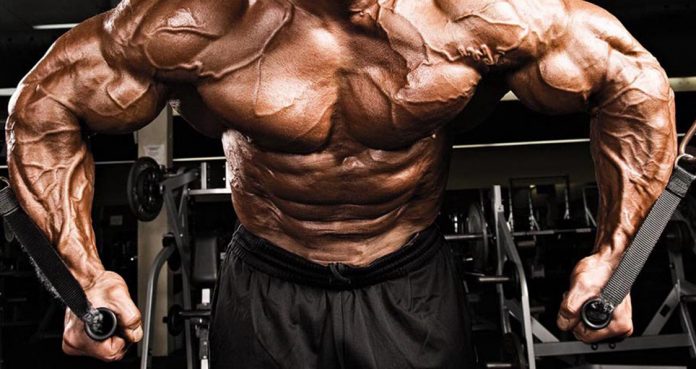
The 5 Best Machines For Getting Shredded
The 5 Best Machines For Getting Shredded
With the evolution of bodybuilding, researchers have come up with ways to speed up the process of gaining muscle mass with the help of better nutrition and advanced training techniques. Over the years machines used in the gyms have gotten better.
Using machines can help you achieve your desired results while preventing injuries. Many bodybuilders use machines while preparing for competitions to avoid injuries. Machines are great for beginners as they limit the range of motion and avoids recruiting muscle stabilizers.
These are the 5 Best Machines
1. Cable Crossover Machine
Cable crossover station is one of the most important equipment in a gym. You can do a variety of exercises targeting different muscle groups on this machine. If your gym doesn’t have a cable crossover machine, you should start looking for a new gym.
Using cables has a different effect on your muscles as compared to using free weights. You have constant tension on your muscles during the eccentric and concentric movement while using the cables.
2. Smith Machine
Smith machine is another gym essential. It is a great equipment for people who can’t perform exercises like the bench press or squats due to problems like joint pains. The smith machine avoids recruiting secondary muscle groups as your path of motion is fixed.
The smith machine is great at developing your lagging muscles as it limits your movement. Let us say you have a overdeveloped glutes and weak quads. You can eliminate your glute recruitment and focus entirely on your quads by placing your feet in front of you.
3. Pec Fly Machine
The pec deck machine is nearly as effective as the bench press in activating the pectoralis major. Using the pec fly machine will help you in maintaining constant tension on your inner chest. This machine is a must for people who want striations and separation in their chest.
You can also work your rear delts on the pec fly machine. Sit with your chest against the pad to target your rear deltoids. Rear delts are a weak muscle group for most people. They make it even worse by not training them often.
4. Leg Press
You will hardly see a gym without a leg press machine. The leg press machine can help you in building muscle mass and strength in your lower body. The leg press also happens to be one of the most abused machines in a gym.
Many people load the machine with more weight than they can handle. You will see the best results while using the leg press machine by following a full range of motion. Excessive weight puts stress on your lower back and can result in an injury if you fail a rep.
5. Hammer Strength
Hammer strength is one the best equipment for training your chest. The hammer strength is incredibly effective for people who can’t bench press for some reason. Pros use this machine while preparing for a contest or during muscle rehab.
You target the same muscles while using the hammer strength as you do during the bench press. As you are in a leveraged position, you can use heavier weights on the hammer strength as compared to the flat bench press.
Which is your favorite machine?
Let us know in the comments below. Also, be sure to follow Generation Iron on Facebook and Twitter.
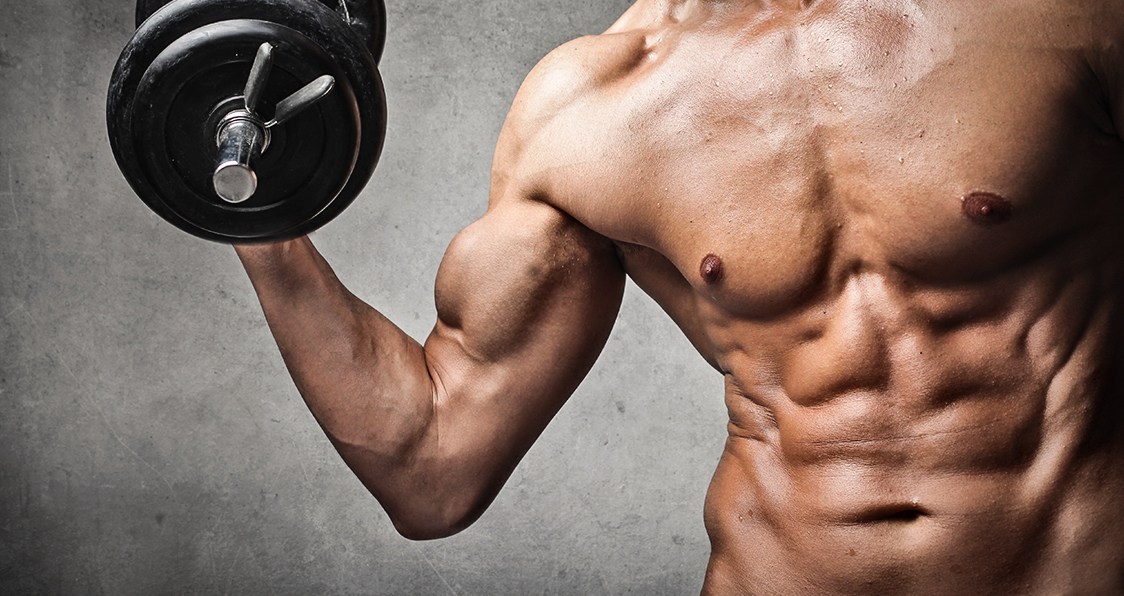
The Secret To Overload Training
Time to push your training over the edge and into the next level.
When your typical training routine just isn’t cutting it, you can always count on Generation Iron to bring you something to freshen things up a bit. Overload training is a great method to get some gains without just completing the typical three sets of ten reps basic program. Overload training is great for building strength and putting on mass as well. Overload training forces your body to get used to the increased effort and stress you put your body through in order to increase hypertrophy. But how exactly do you go about overload training? We’ve got you covered.
1. Form and ROM
First thing’s first. When it comes to overload training you have to make sure your technique is in tip top form. Things like form and rang of motion don’t really sound sexy, but neither do the words slipped disk. Injury is the enemy of gains and if you want to to make some you’re going to have to get your technique down when it comes to lifting. Once you’ve perfected the mechanics of a lift then practicing to obtain full range of motion will be the next priority. This will enable you to attack a muscle group from all different angles and activate all the muscle fibers you’re looking to attack.
2. Increase Volume
Once your form is clean then the logical next step is to increase the amount of reps and/or sets. By now your body has gotten used to the weight that you’ve been hauling. The pump that you used to experience has slowly begun to fade away and you’re feeling like you’ll never experience it again. Don’t put down those weights quite yet. Up the volume on your lifts and you’ll find yourself not only experiencing hypertrophy, but building strength and muscle endurance as well.
3. Increase Weight
You can’t just rely on increasing your reps to get bigger. There’s going to come a time when you’ll have to up the weight you’re lifting. But this doesn’t mean you should go from 75 lbs dumbbells to 200 lbs. Instead you’ll be lifting a higher amount of weight and decreasing the volume. Say you’re pushing 225 lbs on the bench for 10 reps, increase the weight to 250 lbs and perform 8 reps. Then up it to 275 lbs and 6 reps and so on until you reach your one rep max.
4. Intensity
It’s gotta be said. If you want to see some major changes in your physique then you’re going to have to train hard. The intensity of your workout has a part to play in the amount of muscle you’ll pack on from training. This is where the form, the increased volume, and increased weight comes into play. Combining all these factors as well as performing the same amount of reps/sets in a shorter time or a greater amount of reps in the same amount of time for an average lifting regimen will in affect make for a more intense workout.
5. Frequency
The amount of time you work a muscle group per week is also important to getting the full benefit from overload training. If you’re one of those hit the gym three times a week kind of guys then you’re going to have to change things up for overload training. Get in the gym five days a week so that you’re constantly training a muscle group on each day of the week. There’s nothing better than consistency when it comes to training.
What are your thoughts on overload training? Let us know in the comments below and be sure to follow Generation Iron on Facebook and Twitter.
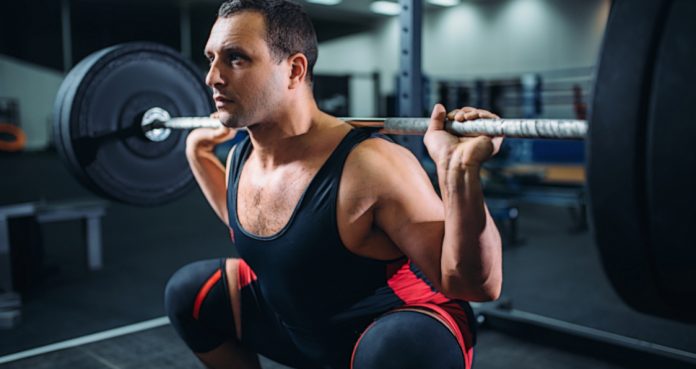
The Absolute Best Leg Exercises For Men
7 Workouts For Building Mass in the Glutes, Hamstrings and Quads
Leg-day tends to divide bodybuilders. There are those who really enjoy a hard leg-based workout and those who’d rather replace leg day with chest day. With so many methods and pieces of equipment at our disposal, it can be challenging to know where to start.
The methods employed and the exercises selected should be dictated by the primary goal that has been set. While it’s true that there will be similar components with the majority of leg workouts, each one should be tailored to a specific goal.
For example, understandably squats tend to be a part of the majority of leg workouts – however, there are a number of squat variations which can be used to focus on a specific muscle group. Additionally, there are a number of advanced training techniques – such as supersets and pre-exhaust – which can be utilized in order to bring about specific changes to the muscle.
To highlight the importance of specificity in training, let’s take an individual who is looking to start bodybuilding. It would not be sensible for them to immediately dive in to heavy squats, leg presses, and deadlifts, considering their lack of experience and readiness. Instead, they must first lay a solid foundation by establishing efficient movement. Only once this has been done, can they consider gradually moving on to heavier, more complex exercises.
7 Leg Workouts For Every Type of Goal
Taking this into account, the following 7 workouts all have a different focus. Each workout has been carefully designed so that it can easily be incorporated into a typical bodybuilding “split” program. Providing consistency and intensity are prevalent in one’s training, the muscles of the legs will be forced to adapt and improve in strength and size.
1) Building Foundations
The first workout of the 7 is perfect for the beginner or novice. There is no denying that the squat is one of the best leg development exercises that can be performed. However, being able to squat with safety and efficiency does not happen overnight – practice is required.
When learning to squat, or when learning any new skill, the movements may initially feel strange, uncoordinated and unstable. This comes down to the nervous systems control over the body. When learning a new skill, it takes time and repetition in order to establish neural pathways in the brain and allow the body to “understand” the movements required (1).
The best example of this is a toddler learning to walk. Initially, they are unstable and can’t manage more than a few steps before falling to the floor. However, with practice, these neural pathways become established to the point that they can efficiently walk and falling over is no longer an issue.
Therefore, with this workout, the goal is to allow the user to get to grips with the movements required for the squat. Gradually, as efficiency and confidence improve, the load being lifted can be increased to maximize changes in leg strength.
The rest of the workout is heavily machine based, as machine-based exercises do not require as great a degree of coordination and understanding of movement as the squat. Incorporating weight machines at this stage is recommended as they will provide a controlled introduction to weight training and effectively load the muscles without running the risk of sustaining injury.
Exercise
Sets x Reps
Goblet Squat
4 x 10 – 12
Leg Press
3 x 10 – 12
Leg Extensions
3 x 10 – 12
Leg Curls
3 x 10 – 12
Calf Raises
3 x 15 – 12
2) Mass Building
When it comes to building size, it is important that we focus first on “big” compound exercises which target the greatest number of muscles. These exercises place a large stress on the muscles which forces them to adapt in size. It would make sense to start with the exercises that require the largest degree of exertion and energy as these are the exercises that will have the most profound effect on developing size.
Additionally, it is imperative that the overall training volume is relatively high and that we train to muscle failure often as a studies have indicated that these are important factors when it comes to packing on size (2).
Finally, it may be sensible to change the dynamic of specific exercises in order to target the muscles in a slightly different way. A good example that may be worth considering is altering foot placement with the leg press or squat. A slightly wider stance will take the emphasis from the quadriceps and shift it onto the glutes and hamstrings, whereas a narrower stance will accentuate the quads.
This workout involves a number of free weight and resistance machine exercises that target all 4 muscle groups of the legs – the glutes, quads, hamstrings and calves. Additionally, it uses an advanced training method known as the reverse pyramid which simply involves varying the number of reps and load lifted per set.
The reverse pyramid is beneficial as it accommodates for muscular fatigue and allows the user to continually hit maximal fatigue with each and every set. As the rep range increases, look to decrease the load that is being lifted and look to reach muscular failure with each set.
Exercise
Sets x Reps
Barbell Squat
4 x 6, 8, 10, 12
Leg Press
4 x 8, 10, 10, 12
Dumbbell Walking Lunges
3 x 10, 12, 14
Leg Extensions
3 x 10 – 12
Lying Leg Curls
3 x 8, 10, 12
Calf Raises
4 x 10, 10, 12, 12
3) Improving Definition
For many, the belief is that high reps and light weight is optimal for building muscle definition. However, research does not seem to support this theory. Application of heavy loads are equally as effective at maintaining muscle size and developing muscle tone.
Ultimately, the strength training method used will be less significant than one’s nutrition when it comes to enhancing leanness. If leanness is the goal, the primary focus should be on nutrition to bring about a reduction in overall stored body fat. Without a thick layer of body fat over the top of the muscles, they will immediately look more defined and lean. This can only be done by maintaining a calorie deficit over a prolonged period.
Strength training is super important in a calorie deficit. Without appropriate training, there may be a reduction in muscle size along with a reduction in body fat, however, regular strength training can prevent muscle atrophy (3).
The workout involves a multitude of compound exercises, straight sets and supersets to target all muscle groups of the legs. Supersets involve completing one exercise straight into a second exercise (with no rest); this method can be used to effectively increase the overall volume of one’s training and therefore assist in maintaining muscle size.
Exercise
Sets x Reps
Smith Machine Squat
4 x 8 – 10
Leg Press (Superset 1)
3 x 10 – 12
Goblet Squat (Superset 1)
3 x 10 – 12
Barbell Reverse Lunge (Superset 2)
3 x 10 – 12
Leg Extensions (Superset 2)
3 x 12 – 15
Lying Leg Curls (Superset 3)
4 x 10 – 12
Donkey Calf Raises (Superset 3)
4 x 12 – 15
4) Glute Building
The following 3 workouts will target a specific muscle group. For many bodybuilders, they may find that a specific muscle group is perhaps lagging behind the others and therefore requires additional attention. Selecting the correct exercises is imperative when looking to target a specific muscle group as some exercises are undoubtedly superior than others.
With this in mind, each of the following exercises has been carefully selected based on the fact that they activate the muscles of the glutes to a large degree. The workout structure is similar to the mass gaining workout and uses a reverse pyramid to encourage muscular fatigue with each set.
Exercise
Sets x Reps
Wide Stance Barbell Squat
4 x 6, 8, 10, 12
Leg Press
3 x 8, 10, 12
Barbell Reverse Lunge
3 x 10 -12
Unilateral Cable Kickback
3 x 8, 10, 12
Romanian Deadlift
4 x 8, 8, 12, 12
5) Hamstring Building
Unfortunately, for so many individuals, the hamstrings are neglected as many of the movements and exercises that we regularly perform are quad and glute dominant. This can lead to an overdevelopment of the quads and glutes while simultaneously underdeveloping the hamstrings. Failing to develop the hamstrings will not only hamper bodybuilding progress but can actually increase the risk of injury.
Once again, the exercises that have been selected place the greatest demand on the hamstrings and will therefore accelerate the rate of hamstring development. The romanian deadlift, for example, has been found to be one of the best exercises for activating the hamstrings and increasing overall hamstring strength (4).
Following a similar structure as the glute-specific workout, this workout uses reverse pyramid sets to increase volume, intensity and accelerate the rate of muscle hypertrophy.
Exercise
Sets x Reps
Romanian Deadlift
4 x 6, 8, 10, 12
Hamstring Bridge
3 x 8, 10, 12
Glute Ham Raises
3 x 8, 10, 12
Leg Curl (Dropset)
3 x 10, 10, 12
6) Quad Building
The final muscle-specific workout, is the quad building workout which places a greater emphasis on the quads through the use of compound exercises, such as the front squat, and isolation exercises, such as leg extensions.
Using a combination of compound (multijoint) and isolation (single joint) exercises is recommended for all muscle-targeted workouts. Compounds contribute towards making substantial improvements in terms of leg strength and size whereas the isolation exercises will place a greater load on a specific muscle (in this case, the quads), to promote growth further and assist in improving compound lift performance.
The quad workout follows exactly the same structure as the hamstring specific workout. This is because, ideally, these muscles should develop at a similar rate in terms of both strength and size. Equal development is important when we consider that these two muscles work together to control and generate movement around the knee and hip. Having one muscle group significantly stronger than the other may increase one’s injury risk.
Exercise
Sets x Reps
Barbell Front Squat
4 x 6, 8, 10, 12
Hack Squat
3 x 8, 10, 12
Leg Press
3 x 8, 10, 12
Leg Extensions (Dropset)
3 x 10, 10, 12
7) Plateau Busting
In any bodybuilding journey, there will be times where a plateau is reached. This is simply where strength and size gains have become stagnant. To efficiently move past any plateau, changes need to be made to one’s training in order to introduce a new training stimulus to the body (5). As a result of this new stimulus, the body will react by adapting and improvements in strength and size will recommence.
This workout uses an advanced training method known as pre-exhaust. The purpose of this method is to partially fatigue the muscles through an isolation exercise before moving onto a heavier compound exercise. This method will push the muscles to their limit and as a result, force them to adapt.
Do be aware that with this method, it may be necessary to lower the weight for the compound lifts. This is because the muscles will already be fatigued prior to performing the compound lift and as a result, it may not be possible to lift as heavy as normal.
Exercise
Sets x Reps
Leg Extensions
5 x 8 – 10
Smith Machine Squat
4 x 8, 10, 10, 12
Hack Squat
3 x 10 – 12
Dumbbell Lunges
3 x 10 – 12
Final Word
In order to maximize results and advance towards the set goal, look to perform the chosen workout over a 4-8 week period. After completing this stint, assess progress and consider switching over to another specialized leg workout to continue improving. By doing this, significant changes in leg size and strength will occur, providing that the workouts are performed consistently and with the right intensity.
For more news and updates, follow Generation Iron on Facebook, Twitter, and Instagram.
References:
1- “Neural Centers Responsible for Movement”.
2- “Resistance Training Volume Enhances Muscle Hypertrophy but Not Strength in Trained Men”.
3- “Preserving Healthy Muscle during Weight Loss”.
4- Schmitt, Kayla (September 28, 2017). Electromyographic comparison of the hamstring muscles during various exercises
5- Sports Health. 2010 Nov; 2(6): 509–518. doi: 10.1177/1941738110375910. PMCID: PMC3438871.PMID: 23015982
